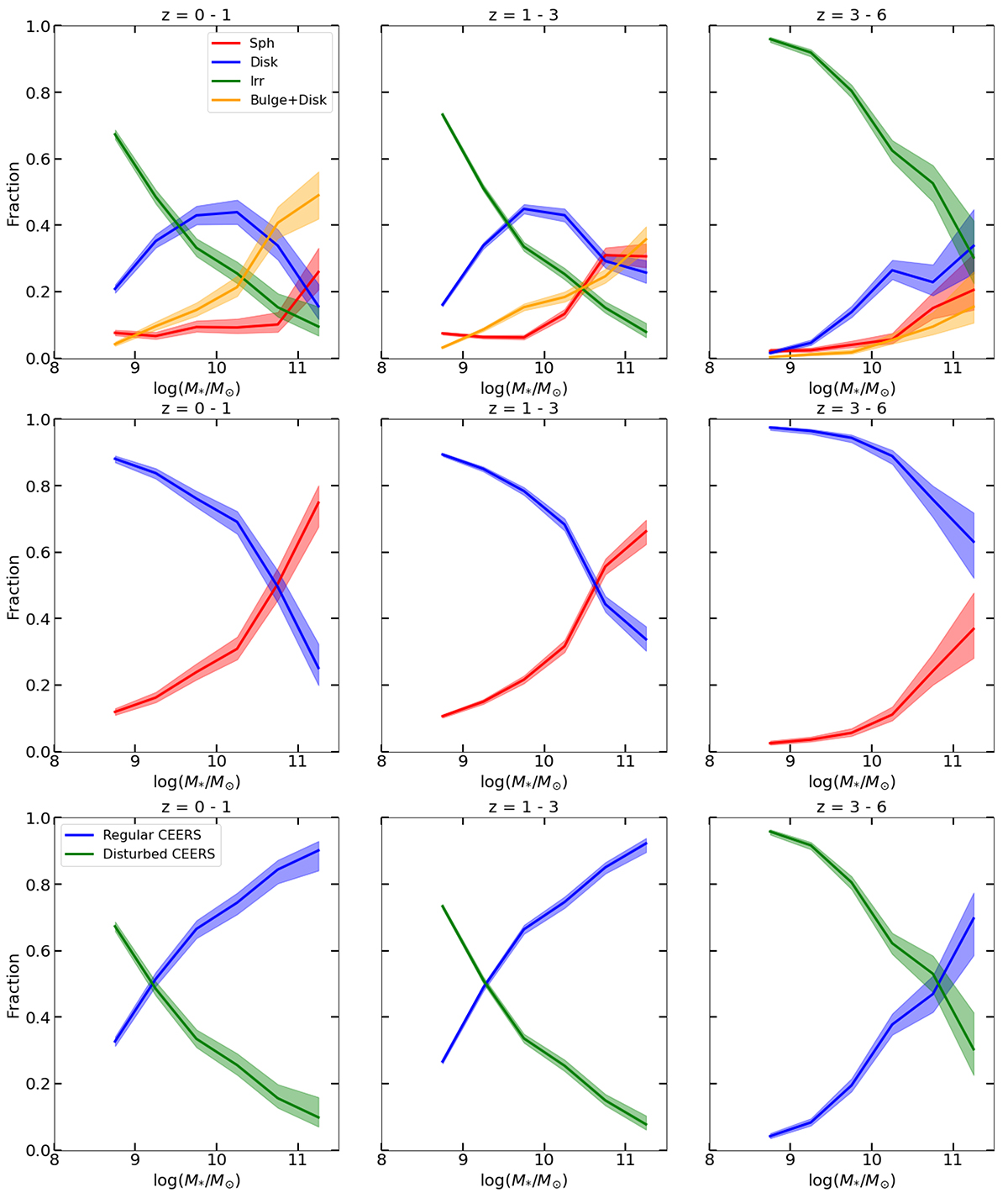Fig. 14.

Download original image
Evolution of the fractions of different morphological types in rest-frame ∼0.8 − 1 μm as a function of stellar mass and redshift. Each panel shows a redshift bin as labeled. Filters F200W, F356W and F444W are used to infer galaxy morphology in the redshift bins 0 < z < 1, 1 < z < 3 and 3 < z < 6, respectively. Top row: fractions in four morphological classes: spheroids (red), disks (blue), bulge+disk (orange) and peculiar or irregular (green). Middle row: fractions in two broad classes: disk dominated (blue) and bulge dominated (red). Bottom row: fractions in two broad classes: regular (blue) and disturbed (green). The fractions of early and regular galaxies steadily decrease with redshift at all stellar masses. However, we still observe a significant fraction of massive bulge dominated and dusky galaxies up to z ∼ 6. As in the previous figure, we observe a regular decline of regular and early-type galaxies with increasing redshift with massive galaxies presenting a more evolved morphology.
Current usage metrics show cumulative count of Article Views (full-text article views including HTML views, PDF and ePub downloads, according to the available data) and Abstracts Views on Vision4Press platform.
Data correspond to usage on the plateform after 2015. The current usage metrics is available 48-96 hours after online publication and is updated daily on week days.
Initial download of the metrics may take a while.


